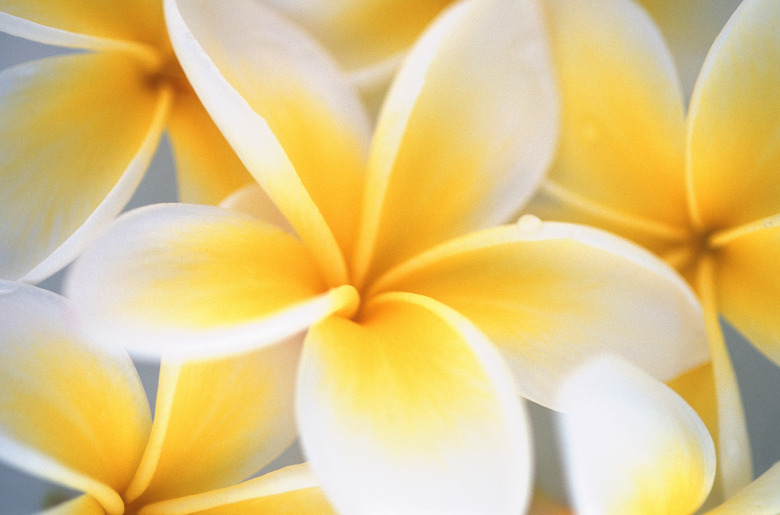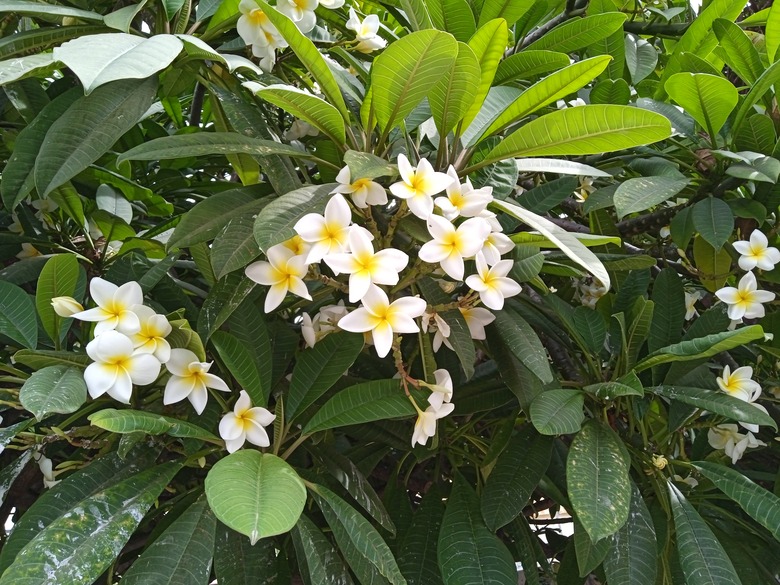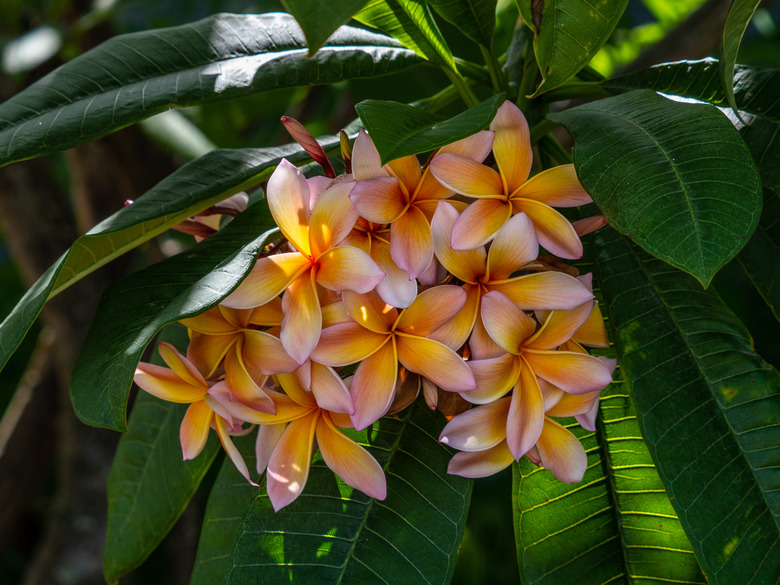Growing Plumerias In Texas
You don't have to live in Hawaii to grow plumerias, but if you plan to grow a tropical plant like plumeria in Texas, you need to opt for container growing. That's because plumerias (Plumeria spp.) can be grown outdoors only in USDA hardiness zones 10 to 12, which even South Texas doesn't achieve.
The good news is that growing plumeria trees in pots is doable as long as you are willing to bring them into a protected space after the growing season.
About Plumeria Plants
Plumeria flowers are famously used in Hawaiian leis, where their evocative fragrance travels on the breeze in the warm sunshine. These powerfully fragrant flowers have been symbolic in multiple cultures for centuries.
In Hawaii, plumeria represents aloha and family, while in the Mayan culture, the plumeria was synonymous with the word "flower" and was considered representative of all flowers.
Also called frangipani, the plumeria genus comprises three species: Plumeria alba, Plumeria rubra and Plumeria obtusa. All these species can grow quite large, although P. alba is the largest, capable of reaching 40 feet tall with a 25-foot spread. P. alba and P. obtusa both produce white flowers, while P. rubra's blooms are deep pink.
Growing Plumeria in Pots
If you grow in the warmest South Texas regions around Austin or San Antonio, you still need to grow plumerias in containers, because the warmest growing zone in Texas is zone 9b.
Choosing a Pot
Choose a big enough pot to accommodate the size of a plumeria. A too-small pot will get top-heavy and be prone to tipping over. Also be sure that the pot offers excellent drainage.
Fill the pot with high-quality potting soil that provides good aeration. Plumerias prefer a slightly acidic environment, so amend the soil mixture with aluminum sulfate if needed.
You might consider using a plastic pot that weighs less than ceramic or clay, making it easier to transport the container into a sheltered location after the growing season.
Warning
Avoid choosing a pot more than 4 inches larger than your plumeria's root ball. Too-large pots tend to support a more waterlogged environment.
As your plumeria grows, you may need to transplant it into increasingly larger pots, but you can also prune it to maintain a smaller shape.
Growing Season Care
Place your pot in a full-sun location. If grown in partial shade, the plumeria will produce fewer flowers.
Tip
If your plumeria is growing larger than you want, you can prune it to maintain a smaller shape. Prune in spring before the leaves appear.
Plumerias are heavy feeders and require regular fertilizer to do their best. Because they prefer a somewhat acidic environment, **choose acidic fertilizers designed for acidic plants,** such as those made for azaleas, hydrangeas or blueberries.
Plumeria plants also require regular irrigation, although they hate being overwatered. Maintain consistent soil moisture. In particular, they need more water while blooming. The best method is to allow the top 2 inches of the soil to become dry before watering thoroughly.
Winter Protection
Plumerias drop their leaves in the fall. When this happens, they are ready to move into a sheltered location to protect them from cold weather. An unheated garage is fine, as long as the plant will not experience freezing temperatures.
**Stop watering completely during this dormant period,** as you don't want to encourage new growth until temperatures warm; also, watering creates conditions conducive to root rot. While the plumeria is dormant, it requires no light, so you can leave it in a dark garage with no worries.
Tip
Plumerias don't need soil while they are dormant. If your pot has grown too heavy to move, you can remove the plant completely from the pot and store it bare-rooted.
When the temperatures warm and all danger of frost has passed, bring the plumeria back outside and get ready to enjoy its fragrant blooms for another season.
Pests and Disease Problems
Plumerias are fairly disease resistant, but they might be targeted by insects, including spider mites, white flies or mealy bugs. Use insecticidal soap or horticultural oil to control these pests.
Check the undersides of the leaves during summer for rust fungus as well. If you note this, remove all infected leaves and spray the plant with a fungicide formulated for rust. Be sure to follow all directions on the manufacturer's package.


